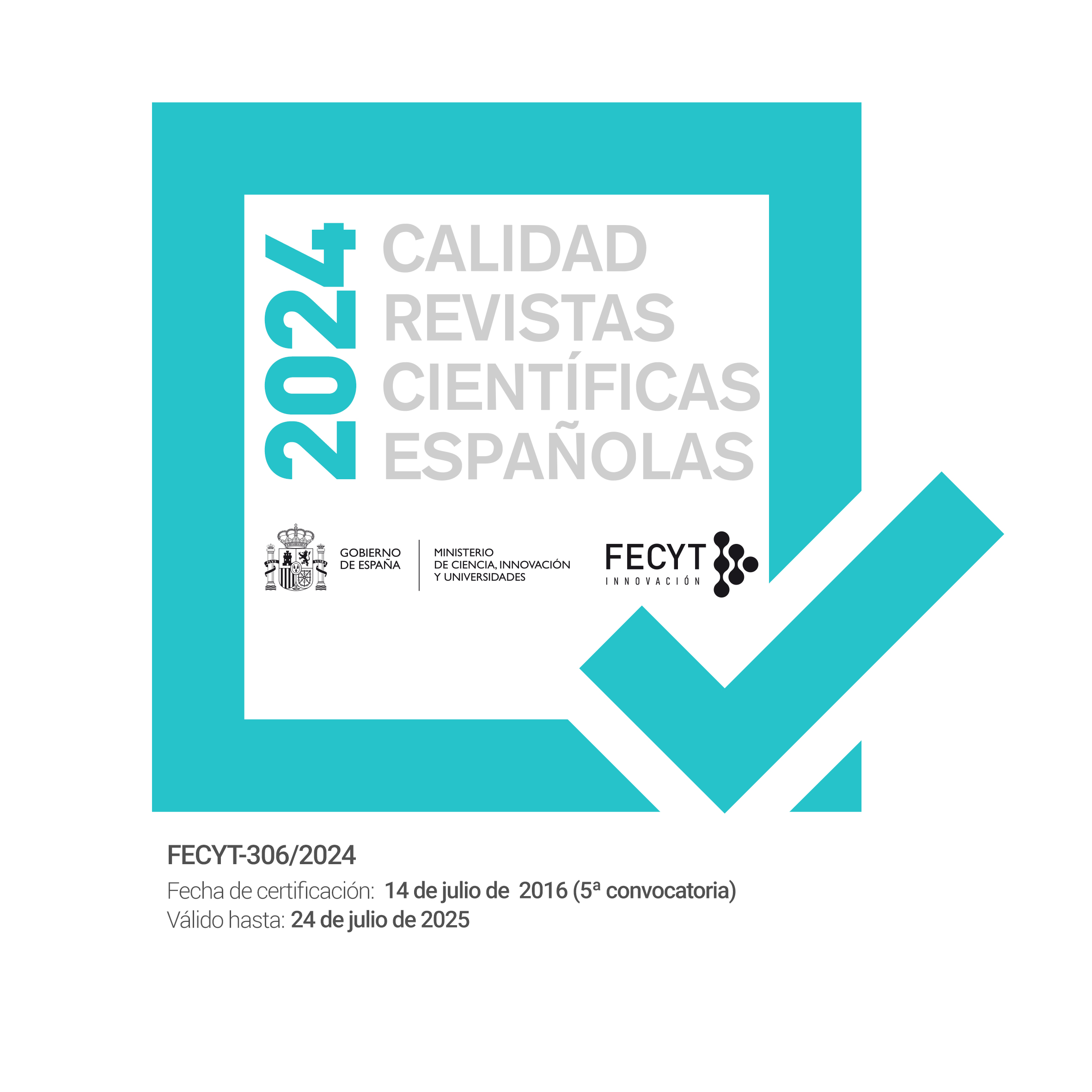Permitir o promover la igualdad de género a través de la política de permisos parentales
DOI:
https://doi.org/10.22325/fes/res.2018.36Palabras clave:
Padres, permiso parental, igualdad de género, Noruega.Resumen
Los Estados de bienestar de los países nórdicos fueron pioneros en la introducción de permisos parentales para los padres, y no sólo para las madres, para cuidar de sus hijos durante el primer año de vida. El derecho de los padres al permiso parental consiste en una parte reconocida como un derecho familiar y otra parte reconocida a título de derecho individual. Este artículo persigue mostrar cómo ambos tipos de permiso han influido en las vivencias y valoración de los padres del permiso parental. Los resultados obtenidos muestran que la parte del permiso parental reconocido como derecho familiar, que ambos progenitores deben compartir, pero no fuerza a los padres a usarlo, posibilita la igualdad de género. Los derechos individuales al permiso, como es la cuota para el padre, permite una promoción más efectiva de la igualdad de género en el uso de los permisos y en el cuidado de los niños.
Citas
Brandth, B. Kvande, E. (2001): Flexible Work and Flexible Fathers. Work, Employment and Society. 15 (2), 251-267.
Brandth, B. Kvande, E. (2009). Gendered or Gender-Neutral Care Politics for Fathers? The Annals of the American Academy of Political and Social Science, 624 (1), 177-189.
Brandth, B. Kvande, E. (2012). Free Choice or Gentle Force? How Can Parental Leave Change Gender Practices? In: T. Kjørholt and J. Qvortrup (Eds.): The modern child and the flexible labour market. Early childhood education and care. Houndsmill, Basingstoke: Palgrave Macmillan. Brandth, B., Bungum, B., Kvande, E. (ed.) (2005). Valgfrihetens Tid, Omsorgspolitikk for barn i det fleksible arbeidsliv (In the Epoque of Free Choice. The Politics of Care in the Flexible Working Life). Oslo: Gyldendal Akademisk.
Bloksgaard, L. (2013). Uten fedrekvote i lovgivningen: Danske fedres forhandlinger om permisjon fra arbeidet. In: B. Brandth and E. Kvande (Eds.): Fedrekvoten og den farsvennlige vel- ferdsstaten. Oslo: Universitetsforlaget.
Blum S., Koslowski, A., Moss P. (2017). International Review of Leave Policies and Research. Available at: http://www.leavenetwork.org/ lp_and_r_reports/
Brighthouse, H., Wright, E. O. (2008). Strong gender egalitarianism. Politics & Society, 36 (3), 360 372.
Bruning, G., Plantenga, J. (1999). Parental leave and equal opportunities: Experiences in eight European countries. Journal of European Social Policy, 9 (3), 195-209.
Ellingsæter, A. L. (2006). The Norwegian childcare regime and its paradoxes. In: A. L. Ellingsæter and A. Leira (eds.): Politicising parenthood in Scandinavia (pp. 121-44). Bristol: Policy Press.
Ellingsæter, A. L. (2012). Ideational struggles over symmetrical parenthood: The Norwegian daddy quota. Journal of Social Policy, 41 (4), 695-714.
Eydal, G. B., Gíslason, I. V., Rostgaard, T., Brandth, B., Duvander, A-Z., Lammi-Taskula, J. (2015). Trends in parental leave: Has the forward march of gender equality halted? Community, Work and Family, 18 (2), 161-181.
Fougner, E. (2012). Fedre tar ut hele fedrekvotenogså etter at den ble utvidet til ti uker. Arbeid og velferd, 2, 71-77.
Gíslason, I. V., Eydal, G. B. (2013). Tredelt permisjon og lang fedrekvote - erfaringer fra Island. In: B. Brandth and E. Kvande (eds.). Fedrekvoten og den farsvennlige velferdsstaten. Oslo: Universitetsforlaget.
Gornick, J. C., Meyers, M. K. (eds.) (2009). Gender equality. Transforming family divisions of labor. London: Verso.
Haas, L., Rostgaard, T. (2011). Father’s right to paid parental leave in the Nordic countries: Consequences for the gendered division of care. Com- munity, Work and Family, 14 (2), 177-195.
Kitterød, R.H., Halrynjo, S., Østbakken, K. M. (2017). Pappaperm? Fedre som ikke tar fedrekvote - hvor mange, hvem og hvorfor? (Daddy leave? Fathers who do not use the father’s quota - how many, who and why?) Report 2017, 2. Oslo: Ins- titute for Social Research.
Lammi Taskula, J. (2007). Parental leave for fathers? Gendered conceptions and practices in families with young children in Finland. Research report
Helsinki: National Research and Development Centre for Welfare and Health.
Morgan, K. J. (2008). The political path to a dual earner/dual carer society: Pitfalls and possibilities. Politics and Societies, 36 (3), 403-420.
Moss, P. and Deven, F. (1999) Parental Leave : Progress of Pitfall ? Brussels: NIDI/CBGS Publica- tions.
NAV (2014). www.nav.no/Om+NAV/Tall+og+analyse/ Familie+og+omsorg/Foreldrepenger/Foreldre- penger/Fedre+velger+mer+tid+med+barna.37 0132.cms [Accessed 07 May 2014]
NOU Norges offentlige utredninger 2017: 6 Offentlig støtte til barnefamiliene. Oslo: Barneog Likes- tillingsdepartementet.
O’Brien M., et al. (2007). Father, work and family life. Global perspectives and new insights. Community, Work and Family, 10(4), 375-386.
Pascall, G. (2012). Gender Equality in the Welfare State? Bristol: The Policy Press.
Rantalaiho, M. (2009). Kvoter, valgfrihet, fleksibili- tet. Indre spenninger i den nordiske familiepoli- tikken. NIKK publikasjon, 2009, 2. Oslo: NIKK.
Ray, R., Gornick, J. C., Schmitt, J. (2010). Who ca- res? Assessing generosity and gender equality in parental leave policy designs in 21 countries. Journal of European Social Policy, 20, 196-216.
Rostgaard, T. (2002). Setting time aside for the fa- ther: Father’s leave in Scandinavia. Community, Work and Family, 5 (3), 343-370.
Salmi, M. and Lammi-Taskula, J. (2015). Policy goals and obstacles for fathers’parental leave in Finland. In: T. Rostgaard and G. B. Eydal (eds.): Fatherhood in the Nordic Welfare States. Bristol: Policy Press.
Sainsbury, D. (1999). Gender, Policy Regimes and Politics. In: D. Sainsbury (ed.), Gender and Welfare State Regimes. New York: Oxford University Press.
Descargas
Publicado
Cómo citar
Número
Sección
Licencia
Todas las publicaciones de la Revista Española de Sociología se realizarán bajo una licencia abierta Creative Commons de Reconocimiento 4.0 Internacional (CC BY 4.0). Dicha licencia establece que los autores son los poseedores de los derechos de propiedad intelectual de sus trabajos, que pueden redistribuirse a cambio de un reconocimiento adecuado. Para más información de la licencia Creative Commons, consultar aquí.
Una vez aceptado un artículo para su publicación, la Revista Española de Sociología solicitará al denominado "autor para la correspondencia" la aceptación de una licencia obligatoria Creative Commons incluida en un acuerdo o contrato de publicación.



